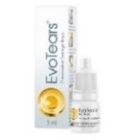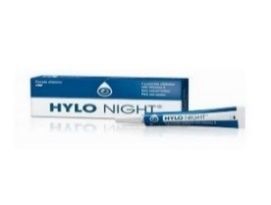Dry Eye
What is Dry Eye?
Dry eye is extremely important with regards vision correction surgery. The very first optical layer (where light bends or refracts) is the interface between air and the tear film. Our diagnostic tests are influenced by dry eye and the surgical success of vision correction surgery is equally impacted by dry eye. We will ensure that your eyes are in good condition prior to the surgery and keep them that way after the surgery.
The principle
The Tearfilm is composed of three different layers:
1. A lipid layer. This is an oily layer on the outer most surface of the tears. This layer stops your tears from evaporating. The lipid layer is secreted by meibomian glands which are located along both the upper and lower eyelid margin.
2. An aqueous or water layer. This is the largest component of the tear film and makes up the bulk of the tears. Aqueous is produced by the lacrimal gland.
3. The mucin layer is the inner most layer of the tear film. It is in contact with the surface cells of the cornea. It is responsible for binding the tears to the surface of the eye.
Symptoms
Dry Eye Disease (DED) is mostly due to one of two things and often both:
1. Lack of water in the tear film
2. Lack of oil on the surface of the tear film protecting the water layer from evaporating.
3. In 86% of DED cases, the lack of the protective oil is the biggest issue.
Dry eye has a wide variety of symptoms. People often don’t realise that their eyes are dry. Symptoms can include painful, sore, gritty or burning eyes, blurred vision, eyes feel tired or fatigued and eyes that water a lot.
Treatment Options
Treatment options will vary depending on the type of dry eye that you have. If there is a shortage of water production, it is necessary to increase the supply of water in the tear layer. If there is sufficient water but there is excessive evaporation of the tear layer, then the tears will also be lacking due to them being exposed to the outside world and it is necessary to improve the oil/ lipid layer to reduce evaporation.
If the problem is due to lack of water:
1. Every time that you blink, whether it is a complete blink or an incomplete blink (the eyelids don’t touch each other during the blink), you produce a water drop. So, remember to blink!
2. Make sure to drink enough water during the day
3. Avoid consuming too much coffee and tea
4. Avoid/reduce intake of medications that reduce the water component or find an alternative medication that does not reduce the water layer of the tear-film: antihistamine tablets for allergies, cold and flu medications/decongestants, some blood pressure medications (please do not stop any medications prescribed by your G.P. without checking that it is ok for your general health to do this)
5. Use lubricating eye drops that assist the water layer: Hylo-Tears, Hylo-Forte, Thealoz Duo, Artelac, Blink, Systane. You can use any drop that you prefer. Our only strong recommendation is that you use a drop that is preservative-free. We advise to use drops 4 times per day as a general guideline but drops can be used as often as required, there is no limit to the number of drops that can be used daily.
If the problem is due to lack of oil:
1. You only produce oil when the eyelids touch one another during the blink process. When the eyelids touch each other, the Meibomian glands express a drop of oil much like a toothpaste tube would express toothpaste. The blink therefore needs to be COMPLETE i.e. the eyelids must touch during the blink action. Train yourself to blink properly e.g. while working on a laptop or computer, squeeze the eyelids tightly every time that you press the Enter key. This creates an association and over time, your blinking will become more effective.
2. HyloNight is gel to be used at night and other gels (Thealoz duo, Vidisic, Liposic) contain oil and help add to the oil component of the tear film overnight.
3. Some eyedrops contain some oil too e.g. Hylo-Dual and this can be used during the day.
4. Do warm compresses: this softens the oil, opens the glands and when you squeeze them, the thicker, older oil can be expressed and newer, fresher oil can be loaded into the gland from the blood stream. There are a number of videos on the Wellington Eye Clinic website that demonstrate the use of an eye bag and doing warm compresses with a hot cloth. Doing them with a hot cloth is hard work and most times people tend to give up on this method of hot compresses within a couple of weeks. With an eye bag that heats in a microwave or oven, better outcomes are achieved thanks to improved compliance. We recommend two brands of microwaveable eye bags; The Opti-Therm and Optase.
How to do warm compresses:
· Place an eye bag or microwaveable heat pad into the microwave as per instructions on bag
· Be sure to check the temperature of the compress on the back of your hand or on your cheek, making sure it’s not too hot.
· Find a comfortable place to sit down where you can recline your head. Place the compress over the eyes for at least 10 minutes. The heat tends to make the meibum secretions softer and dilate the glands slightly thereby facilitating the expression of the oily meibum. This should ideally be followed by meibomian gland expression which is explained below.
To see the videos, go to www.wellingtoneyeclinic.com and use the search function (top right of the screen, a small magnifying glass icon) to search for “Warm compresses” and “Meibomian Gland Expression” for video explanation of techniques.
5. Do Meibomian Gland (MG) expression using a Q-tip/earbud/cotton-tipped applicator to apply pressure to the Meibomian Glands and get the thicker oils to evacuate the glands. Once the warm compress has been done, it is best to express the glands by massaging them with a Q-tip/cotton bud. This takes about one minute per eye lid. It can be performed on both lids but is generally only performed on the lower lid. When this material is expressed into the tear film it may be very uncomfortable as the material is old and possibly inflamed. Within a few days to weeks however, once the older oils have been expressed, the new healthy oils will start moving through the glands and the comfort levels will increase significantly.
6. Ensure that you get enough omega-3 oils in your diet. We recommend Omega-Eye, 4 capsules per day: 2 in the morning and 2 at night. The Omega 3 supplement that we recommend is the only one to our knowledge that has shown in published results to have a beneficial effect on the tear film. There are alternatives to Omega Eye like flaxseed oil and krill oil but they need to contain the same amount of EPA and DHA (1680mg and 560mg respectively) as Omega Eye to be as effective at improving tear film. Taking 4 Omega Eye capsules daily is equal to eating 37 cans of tuna per week!
7. If you go through all the above treatment options and have success at opening the MGs and getting them returned to producing oil, if you are NOT blinking properly and keeping the oil moving through the glands, they will clog up again. If you are not blinking properly, you will need to continue with warm compresses and MG expression to keep the oil moving through the MGs.
8. The “perfect solution” is once the MGs have been rehabilitated and the tear film is healthy, that this status is maintained by proper blinking where the eyelids touch during the blink process.
Genre | Product | Name | Dosage | Duration | Apply |
Lubricant Drop |  |
Hylo-Forte | ___Times/day | For ___months |
|
Lubricant Drop |  | Hylo-Dual | ___Times/day | For ___months | |
Lubricant Drop |  | Thealoz Duo |
___Times/day
| For ___months | |
Lubricant Drop |  | EvoTears | ___Times/day | For ___months | |
|
|
|
|
| |
Lubricating Ointment |  | Hylo Night |
At night
| For ___months | |
Lubricant Gel |  | Vidisic | At night | For ___months | |
Lubricant Gel |  | Thealoz Duo Gel | At night | For ___months | |
|
|
|
|
| |
Omega 3 |  |
| 4 caps / day | For 3 months minimum | |
Warm Compress |   | Opti-Therm/ Optase | 10 minutes/day | For ___ weeks | |
Q-tip expression |  | Lower lid | 1 minute per eyelid | For ___ weeks |
Alternative treatment options
If the MGs are completely blocked, an attempt can be made to open them by means of MG probing. This is done in our theatre where the MGs are individually probed and opened under the operating microscope. This often leads to an improvement in the condition if the glands were blocked and there is oil in the glands. If the MGs have atrophied completely (died/disappeared), then these treatments will not be of help and the only treatment is putting in artificial tear gel every night.
If the MGs are viable but these conservative measures are not helping, then MiboFlo and IPL treatments often help. These are performed in the clinic.